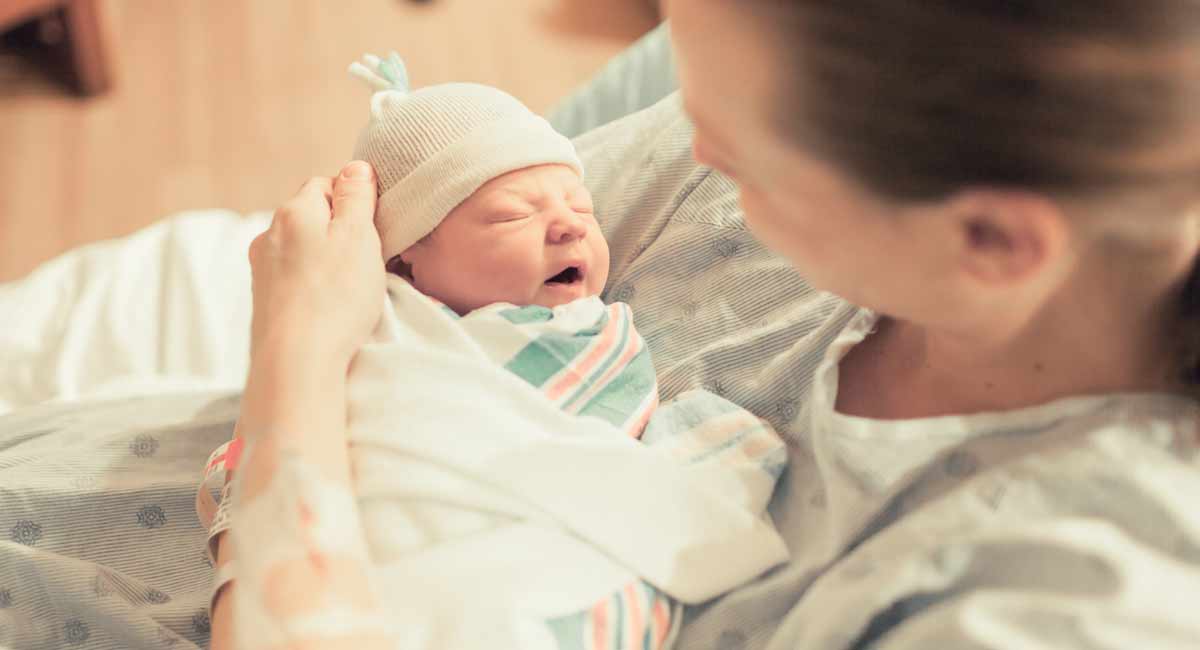The U.S. infant mortality rate rose by three percent from 2021 to 2022 — and experts point to maternity care deserts as the cause of the increase. Previously, the infant mortality rate had declined by 22% from 2002 to 2021.
The study, released on Wednesday by the National Center for Health Statistics, revealed that there were 5.60 infant deaths per 1,000 live births in 2022 compared with 5.44 deaths in 2021. In all, in 2021 there were 19,928 infant deaths, while in 2022 there were 20,538. These deaths included both newborn and postneonatal deaths (28 days or longer since birth), with newborn deaths rising three percent and postneonatal deaths rising four percent. Infant deaths due to maternal complications — including preeclampsia or preterm delivery — and bacterial sepsis have risen by 8% and 14%, respectively, reported CNN.
“We live in a country with significant resources, so the infant mortality rate and the increase are shockingly high. As pediatricians who help children grow into healthy adults, any death of any child is one too many. The infant mortality rate in this country i[s] unacceptable,” Dr. Sandy Chung, president of the American Academy of Pediatrics told CNN.
Rachel Hardeman, professor of health and racial equity at the University of Minnesota along with Dr. Elizabeth Cherot, President and CEO of March of Dimes, said that geographical areas are likely contributing factors in the high infant mortality rate. Such areas are known as “maternity care deserts.”
Live Action News has previously reported on maternity care deserts, which exist across the United States in both pro-life and abortion-friendly states. These deserts typically exist in rural areas of the country as only about seven percent of obstetric providers such as obstetricians and certified midwives serve rural areas, according to Dr. Zsakeba Henderson of the March of Dimes.
Adding to the already low number of obstetric providers in rural areas, labor and delivery units in those areas are closing. Shifts in local populations’ ages, the decline in the birth rate, and financial and logistical challenges that were aggravated by the COVID-19 pandemic are the primary causes.
In Connecticut, a pro-abortion state, the fertility rate declined by two percent between 2011 and 2020. Trinity Health of New England’s Johnson Memorial Hospital petitioned the state to close its labor and delivery unit at its rural Stafford Springs location this year while Hartford HealthCare’s Windham Hospital in Connecticut stopped delivering babies a few years ago as did Rockville General Hospital, New Milford Hospital, and Milford Hospital.
“People say, ‘Oh, New Milford closed, it was fine.’ They have highways to get people over to Danbury; we have these back roads,” said Dr. Edward Kavle, a pediatrician in Sharon Hospital’s pediatric intensive care unit, which is considering closing. “And there are a lot of papers that tell us that any time over 25 minutes makes it incredibly dangerous for babies.”
In South Carolina, a pro-life state, more than 60% of labor and delivery unit closures were in rural areas and were considered low-volume birthing centers.
“OB services are really not profitable, especially in the small hospitals; they don’t have economies of scale. They don’t want to invest,” said Peiyin Hung, a researcher on maternal health and rural health disparities at the University of South Carolina.
Push to increase abortion access
As pro-abortion politicians and abortion advocates have been focused on increasing access to killing human beings through abortion, maternity centers that offer real health care have been closing down, increasing the risks to the health of babies. As previously reported by Live Action News (emphasis added):
The Biden administration has launched a whole-of-government initiative to push abortion access and even forced taxpayers to pay for the abortion travel of U.S. military members. In short, the current presidential administration and billion-dollar companies like Disney, Amazon, Netflix, and Hulu are seeking to make it far easier to obtain an abortion than to have a baby.
By incentivizing abortion, these major power players are creating a culture that avoids investing in solutions to maternal care deserts.
Abortion is not maternity care, and increasing the number of abortion facilities in rural areas will do nothing to decrease the infant mortality rate. Rather than focusing on abortion, there should be efforts made to ensure all pregnant women and their babies have access to actual maternity care. As Dr. Kavle said, when a woman needs to give birth, minutes matter.








